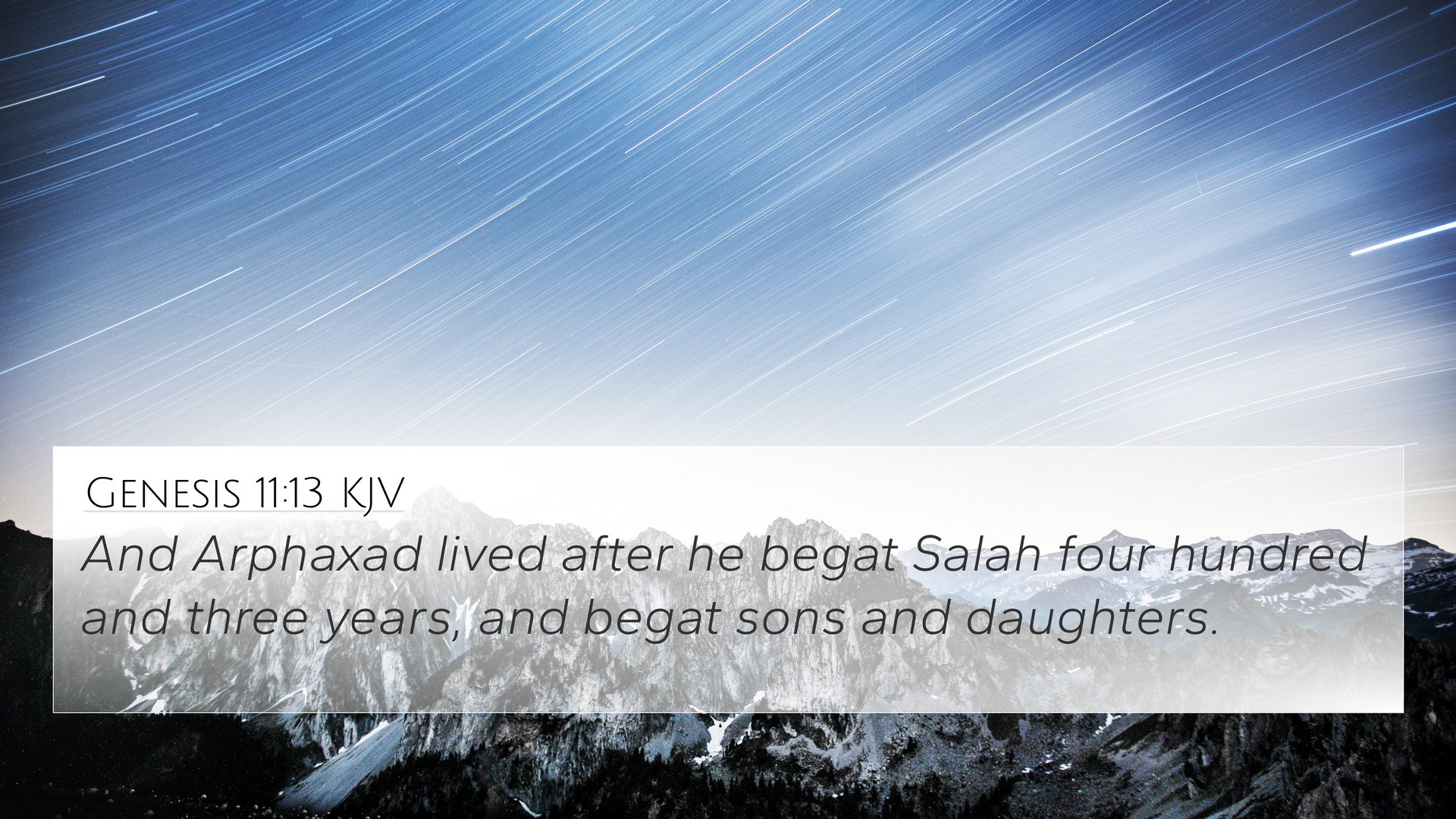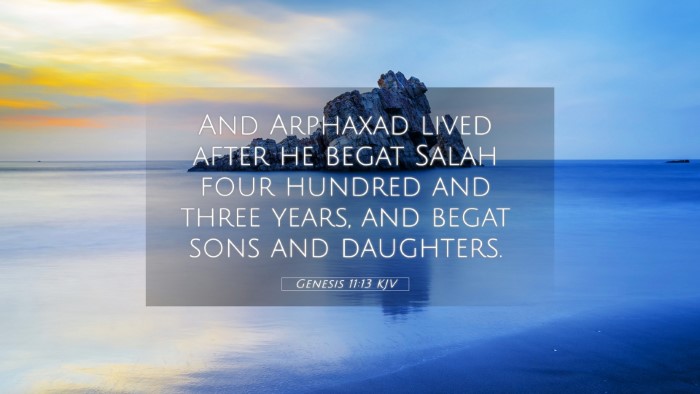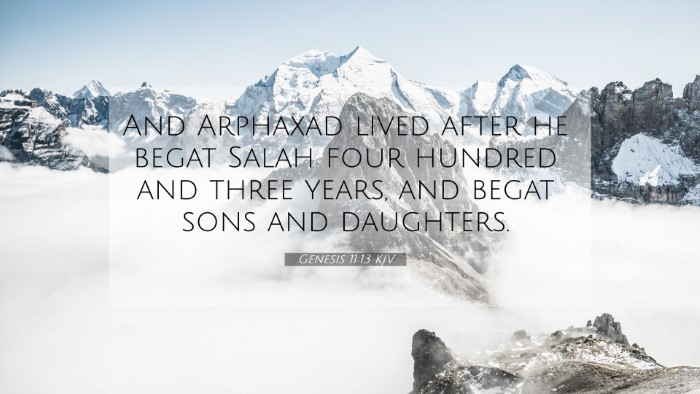Understanding Genesis 11:13
Genesis 11:13 states: "And Arphaxad lived five and thirty years, and begat Salah." This straightforward genealogical reference plays a critical role in the broader narrative of the Bible, tracing the lineage from Noah to Abraham.
Overview of Genesis 11:13
This verse is part of the genealogy presented in the Book of Genesis. Genealogies in the Bible serve not only as historical records but also convey theological significance and purpose within the narrative. In this verse, we see the lineage of Arphaxad leading to the figure of Salah, demonstrating God's promise of sustaining a chosen line through which the covenant with Abraham would ultimately unfold.
Insights from Public Domain Commentaries
Matthew Henry's Commentary
Matthew Henry emphasizes that genealogies, such as that of Arphaxad, reveal God's providential care in preserving the righteous line post-flood. He notes the significance of each name in the lineage and their respective ages, suggesting that these details were meant to show how God fulfills His promises across generations.
Albert Barnes' Notes on the Bible
Albert Barnes highlights the role of Arphaxad as a key figure in the ancestry of Abraham. He explains that the mention of the age at which he begets Salah is a matter of interest in determining the time frame of genealogical records. Barnes points out that such details are crucial for understanding the historical context within which God's covenantal plans unfold.
Adam Clarke's Commentary
Adam Clarke provides a more historical and cultural perspective, suggesting that retaining genealogies signifies a connection to heritage and the importance of family lines within ancient cultures. He expresses that understanding the lineage is essential for grasping the overarching narrative of salvation history as presented in the Bible.
Theological Significance
The genealogy in Genesis 11:13 illustrates both the faithfulness of God in sustaining a line through which His promises would be fulfilled and the importance of understanding our roots within the faith tradition. Each name mentioned carries weight, symbolizing covenant and continuity.
Cross-References and Thematic Connections
Here are several key Bible verses related to Genesis 11:13 that demonstrate thematic connections and continuity within the Biblical narrative:
- Genesis 10:24: References the lineage of Shem and ties directly into Genesis 11:13.
- Genesis 11:10: Discusses the generations of Shem, showing how Arphaxad fits into the broader family context.
- Luke 3:36: Includes Arphaxad in the genealogy of Jesus Christ, illustrating the significance of this lineage in the New Testament.
- Genesis 12:1-3: The call of Abram parallels the lineage's transition to the Abrahamic covenant, showing God's unfolding plan of redemption.
- 1 Chronicles 1:24: Confirms the genealogical line starting from Shem, emphasizing the continuity of the covenant line.
- Hebrews 7:14: References the lineage of Judah, noting the importance of tribal ancestry in relation to Christ.
- Matthew 1:2: The genealogy of Jesus connects back through these ancient lines to affirm God's faithfulness in His promises.
Methods for Cross-Referencing Bible Verses
When studying Genesis 11:13, employing tools for Bible cross-referencing can enhance comprehension and reveal deeper insights. Here are some methods:
- Bible Concordance: Use a concordance to find other verses that mention Arphaxad, Salah, or related family lines.
- Comparative Bible Verse Analysis: Analyze differences and similarities in genealogical accounts to understand historical perspectives.
- Bible Reference Resources: Utilize study Bibles that include cross-references to view interconnections.
- Online Bible Tools: Websites and apps often have cross-reference features that allow for easy navigation through related texts.
- Chain Referencing: Follow the narrative chain that connects Genesis to other parts of Scripture, particularly the New Testament.
Conclusion
Genesis 11:13 may seem merely historical at first glance, but it is rich with meaning that ties into the larger narrative of the Bible. Cross-referencing this verse with others provides insight into God’s overarching plan for humanity and highlights the continuity of His promises.


